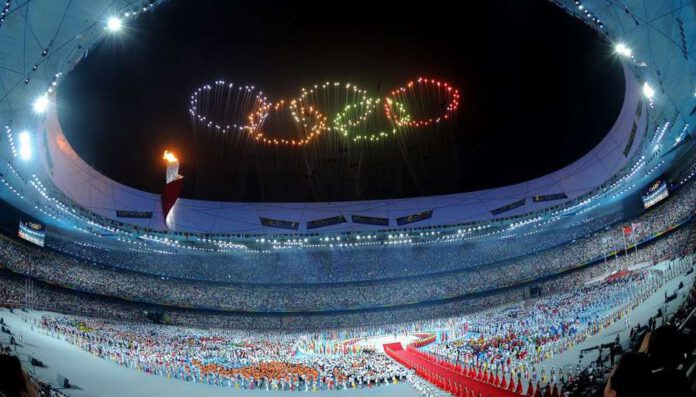
The kindling lamp of the torch adopts the appearance of the Gilt Bronze Human-Shaped Lamp made in the Western Han Dynasty, dated 172 BC, which embodies the Chinese wisdom of an environmentally-friendly design thousands of years ago, but with modern techniques.
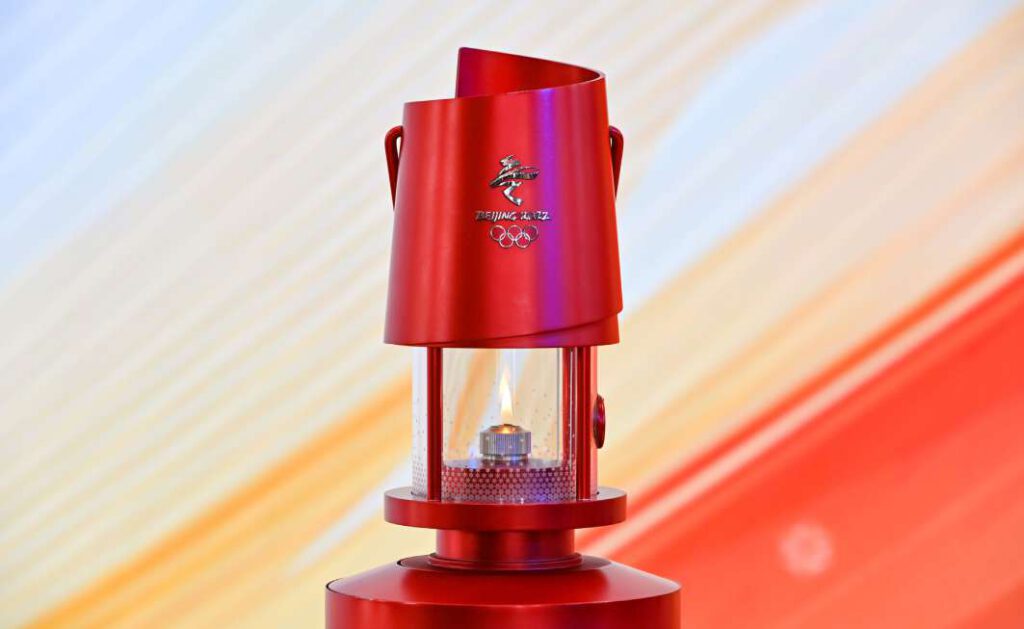

The emblem for the Games uses the figures of an ice skater on top and a skier underneath to form the Chinese character dong (winter). The flowing, ribbon-like motif between the two figures symbolizes rolling mountains, Olympic venues, ski runs and skating rinks. The 24 pictograms of the Winter Olympic Games are inspired by traditional Chinese pictographs and the art of seal cutting.
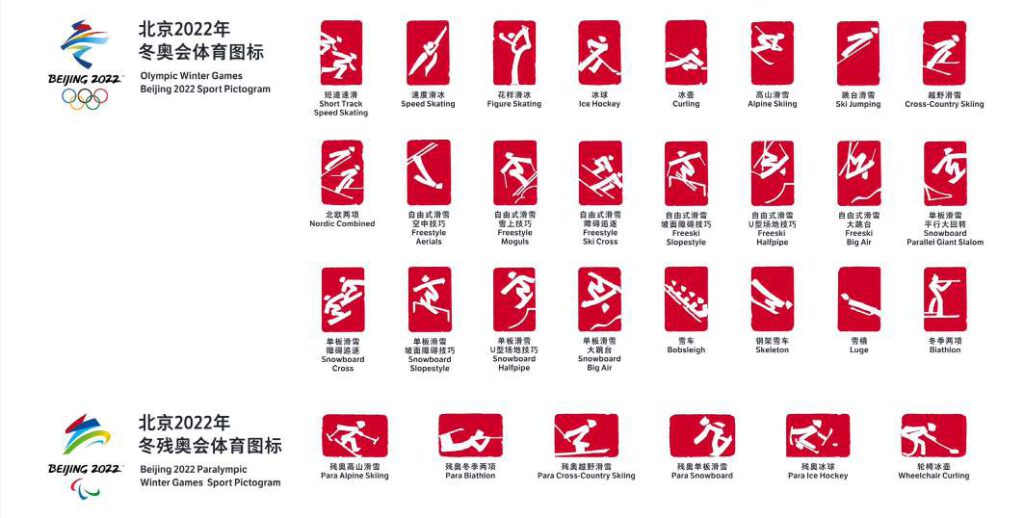
The National Ski Jumping Center located in Zhangjiakou, North China’s Hebei Province, is named “Snow Ruyi” due to its design inspired by the traditional Chinese ornament Ruyi. In Chinese culture, Ruyi, usually made of jade or gold, represents auspiciousness.
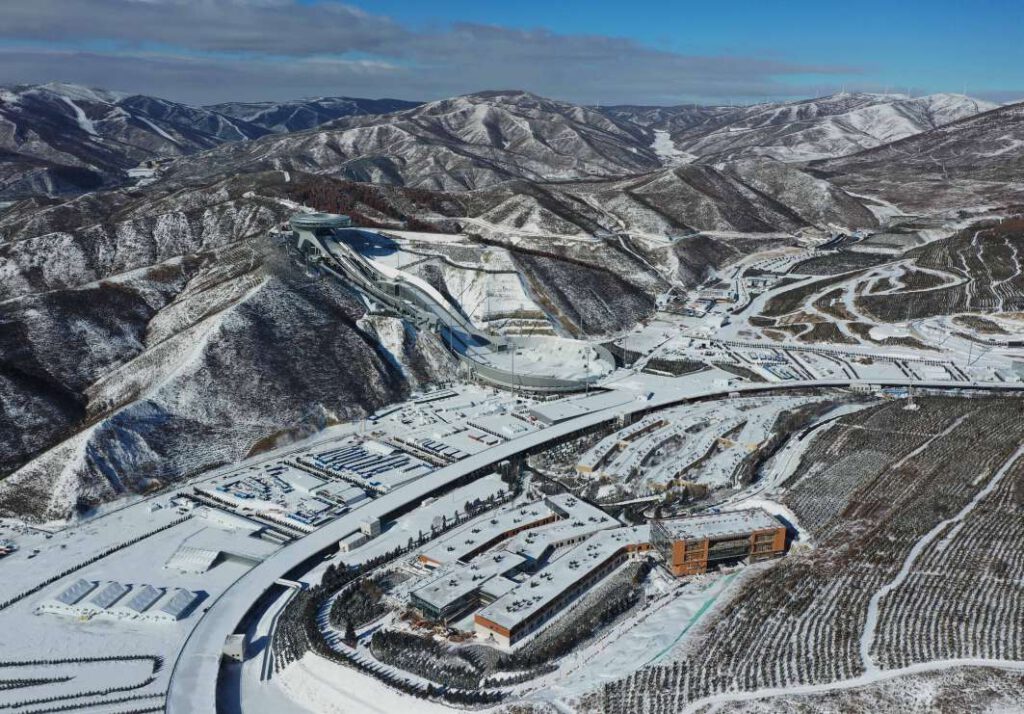
Designed by a Tsinghua University team, Snow Ruyi has combined Chinese traditions with international sports culture. The S-shaped track looks like the main body of a Ruyi hanging in the air, while the bottom consists of a soccer field and audience area.
The torch, named as “Flying,” spirals upward to resemble two overlapping fluttering ribbons. The inner red ribbon evokes rising flames, with the outer one plated in silver to produce a striking contrast. Beaming with dynamism and vitality, the two-tone torch presents a metaphor of ice and fire, symbolizing how it will bring light and warmth to the winter sports gala.
The torch features the Beijing 2022 emblem and the Olympic rings etched on its section, with patterns of clouds and snowflakes painted from the bottom up to the flame.
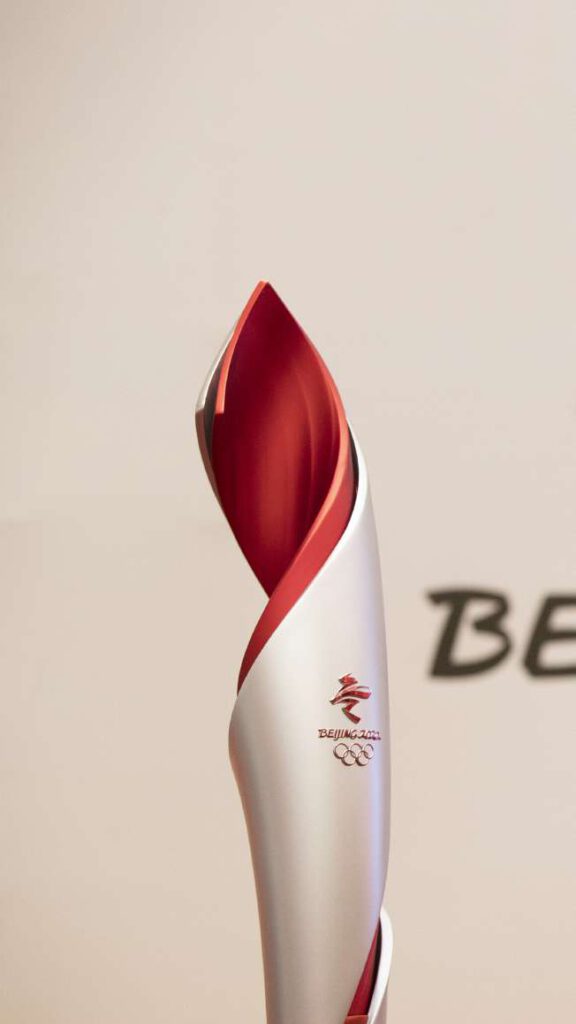
As the torch turns, the whirling red line hidden in the crack seems to stretch endlessly, representing mankind’s relentless pursuit of brightness, peace, excellence and the values promoted by the Olympic Movement. The 2022 torch features a similar design to the 2008 Games’ main cauldron, which resembled a giant scroll, highlighting the legacy of the Olympic spirit in the Chinese capital.
The cloud patterns covering the handle also drew inspiration from the main visual element of the 2008 torch, according to the design team.
The medals named “Tong Xin,” meaning “together as one”—are composed of five rings and a center; the design is based on Chinese ancient jade concentric circle pendants with the five rings representing the Olympic spirit to bring people together and the splendour of the Olympic Winter Games being shared all over the world.
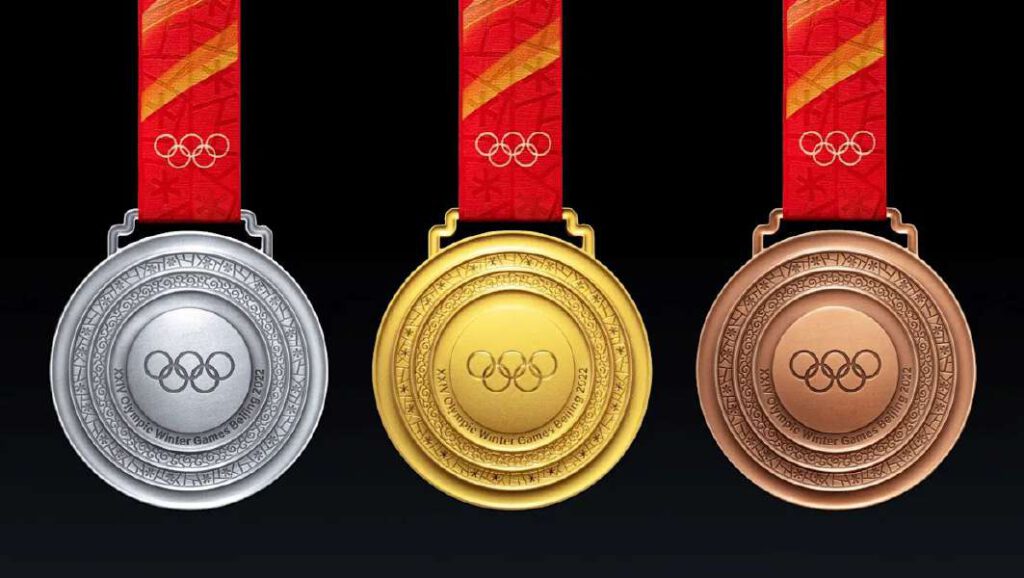
The shape of the gold, silver and bronze medals is simple and classic, resembling the jade-inlaid medals of the Summer Games in 2008 as well as showcasing Beijing as the first“ Dual Olympic City” to host both Summer and Winter Games.
The five Olympic rings are engraved in the center on the front of the medals and the words “XXIV Olympic Winter Games Beijing 2022” are engraved around it, surrounded by ice, snow and cloud patterns. On the back, the emblem of the Olympic Winter Games Beijing 2022 is placed in the center with the full Chinese name of the Beijing 2022 Winter Olympic Games engraved around it. Also on its back is the name of the medal event, engraved on the outermost ring. The ring is concave, which echoes the traditional jade pendant design. The shallow carved designs on the rings are all based on traditional Chinese patterns.
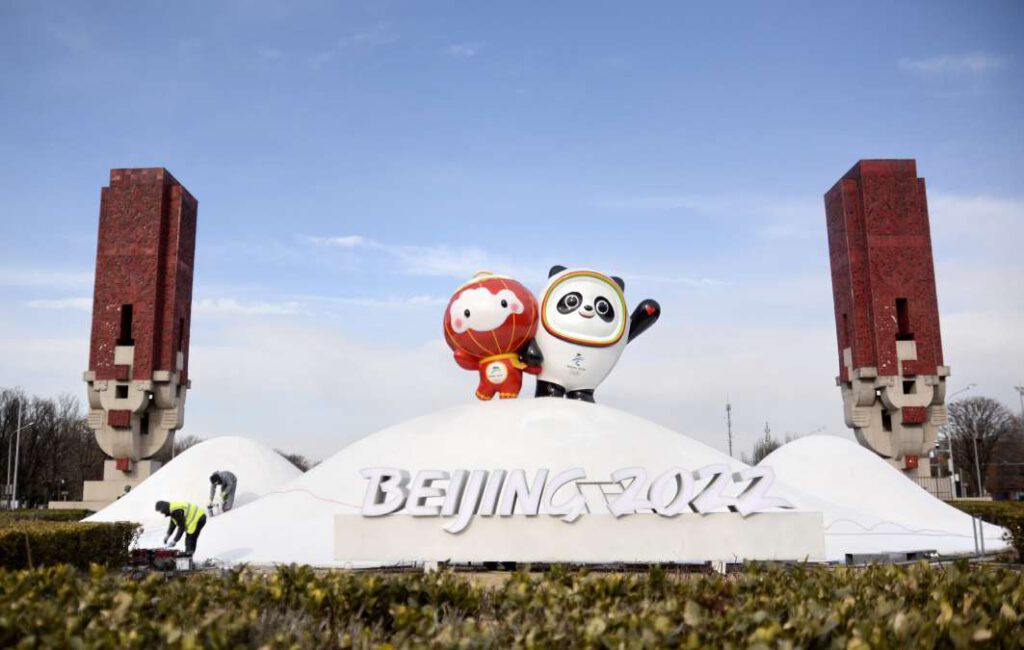
Pandas combine China’s traditional culture and its modern appearance together with winter sports elements in a compelling image that shows our great expectations for the Games and shows that we welcome the world. The mascot really incorporates the best elements and characteristics of China and the Chinese people. The halo surrounding the mascot’s face is suggestive of ice and snow tracks, as we lal s the flowing “ribbons” on the exterior of the National Speed Skating Oval. The oval is one of two new competition venues in downtown Beijing expected to become a landmark of the Games.
Shuey Rhon Rhon—a personification of a red lantern—is the mascot for the 2022 Beijing Winter Paralympic Games. The lantern mascot emanates a glow from its heart that symbolizes warmth, friendship and resilience of disabled athletes. The vivid red image is a perfect fit for the gaal event, especially as the Games will coincide with China’s Lunar New Year celebration in February and March 2022.
(Source: China Insight)



